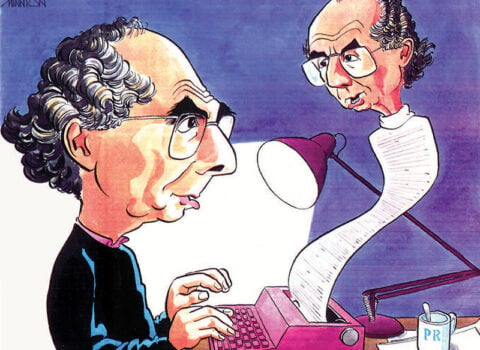Contributors
Karen Russell, “Beeper World”
Karl Ove Knausgaard, “At First Blush”
Amie Barrodale, “My Mother’s Apartment”
Suketu Mehta, “Nina”
Wells Tower, “Hammer Island”
Introductions
Bob Seger was thirty-one years old when he recorded “Night Moves,” which is about as old as I was when I heard it — I mean really heard it — for the first time. You have to be at least thirty to appreciate “Night Moves.”
We weren’t in love, oh no, far from it. . . . We were just young and restless and bored. “Night Moves” is about “grassers” — parties where Seger and his friends would park their cars and put the headlights on and dance to records before (according to the song, anyway) retiring to the back seat or the trusty woods, where they devoted themselves to working on mysteries without any clues. The song is about nostalgia — Seger was as far away from 1962 as we are from the year 2000 — but the weird thing about nostalgia is that it can make you nostalgic for experiences you never had. Objects in the rearview are more precious than they appeared, especially to those teenage virgins who never did anything in the woods but hike. Ain’t it funny how you remember?
The best coming-of-age stories have a hole in the middle. They pretend to be about knowledge, but they are usually about grasping, long after it could be of any use, one’s irretrievable ignorance. Felt the lightning / And we waited on the thunder / Waited on the thunder — that’s when Seger wakes from his reverie, to the sound of thunder in 1976. It took fourteen years for it to find its way to him.
In perhaps the most perfect coming-of-age story, Great Expectations, Pip finds out too late — which is to say, right on time — that he has misunderstood everything about his youth. The fondest memory of the protagonists of Sentimental Education is when, as boys, they ran out of a brothel; their best time was something they didn’t do. Robert Zemeckis had the same idea, in Back to the Future. When Marty McFly gives his parents a better love story and changes his whole childhood, the price he pays is missing it. He can only come of age in an alternate reality. He skips the life that happened. We all do. That’s why we need so many stories about it. — Christine Smallwood
The coming-of-age narrative, a form that might now seem excessively omphaloskeptic — “navel-gazing” — had a noble nativity. By the late eighteenth century, scientists had explained the natural foundations of the world, sending contemporary writers on a search — like the princelings of legend, riding out to find their fortunes — for an analogous cultural science, a set of governing principles for the humanities. Wilhelm Dilthey, one of Hegel’s successors at the University of Berlin, noted this desire in his analysis of Goethe’s master novel of apprenticeship, Wilhelm Meisters Lehrjahre (1795): “A lawlike development is discerned in the individual’s life: each of its levels has intrinsic value and is the basis for a higher level. Life’s dissonances and conflicts appear as necessary transitions.”
The Germans tended to overclassify their exemplars, of course. Wilhelm Meisters Lehrjahre was categorized as a Bildungsroman because the solitary hero cultivates, or shapes — from ausbilden — his adulthood. Goethe’s earlier prose opus, Die Leiden des jungen Werthers (1774), was called a Künstlerroman, a chronicle of creative maturation (the epistolary first-person has a way of germinating artists — Künstler). The French appetite was for more insistently political works that dramatized the growth of representative characters: Rousseau’s Émile, ou De l’éducation (1762) was read, as its subtitle implies, as a treatise as well as a fiction. In many ways, the history of the coming-of-age novel is nothing but the history of the novel itself. As the decades pile up their pages, plot sheds its didactic swaddling, and beauty is achieved — Jane Eyre (1847), David Copperfield (1850), A Portrait of the Artist as a Young Man (1916), The Catcher in the Rye (1951). The greatness of such books explains the genre’s enduring popularity, but it is not the only explanation.
Because one law underwrites them all: that of time, and its obliteration of childhood. At a certain point, everything that accompanies a writer’s existence will gray and wrinkle along with him — into material. Writers come to experience themselves and others at a remove, as the stream of conscious days becomes authored, or is perceived to be self-authored. This is why youth and its professionalizing ebb are and always will be a major topic: for most writers, as for many readers, youth is the last time, the only time, they lived. — Joshua Cohen
Christine Smallwood and Joshua Cohen write the New Books column for Harper’s Magazine.






























































































